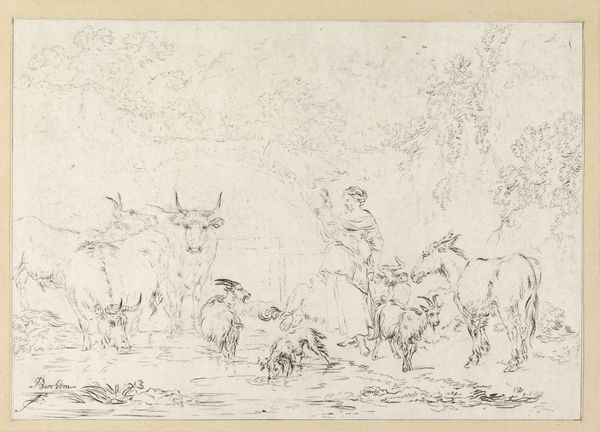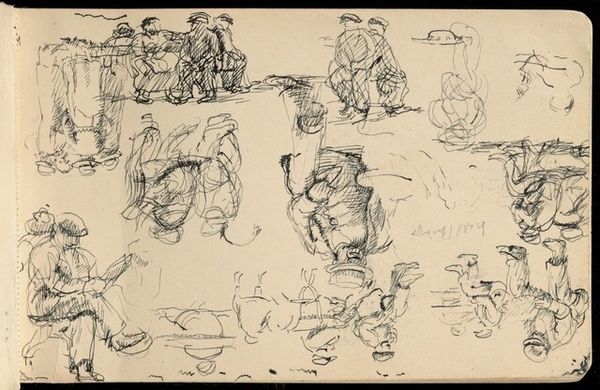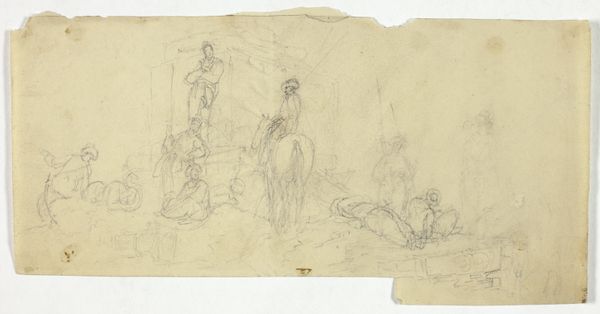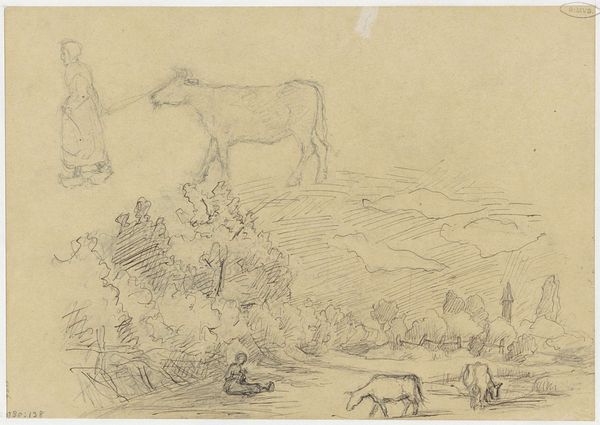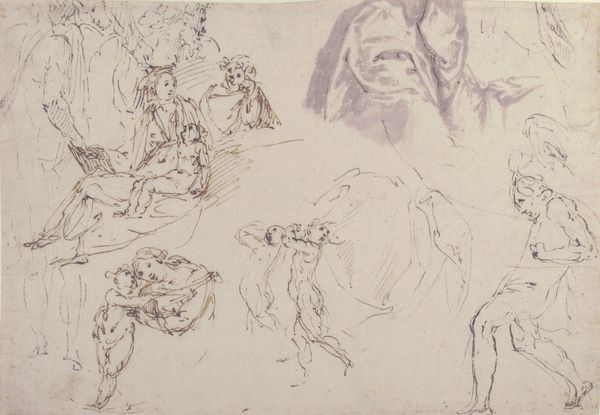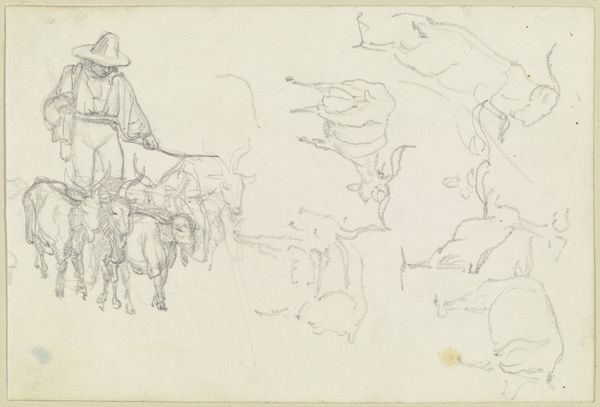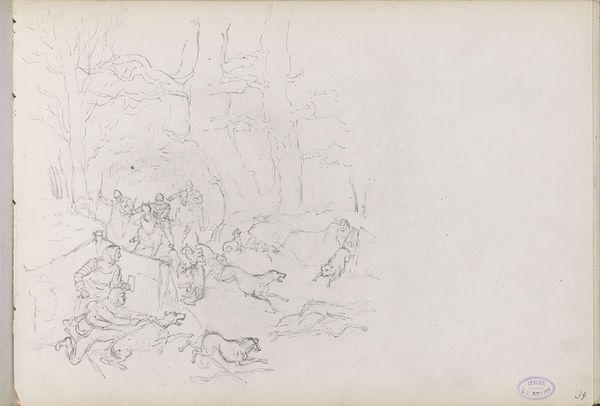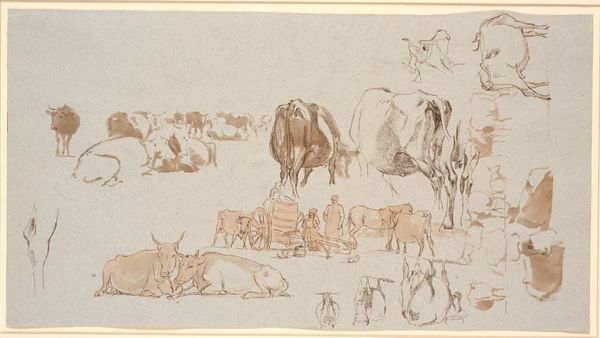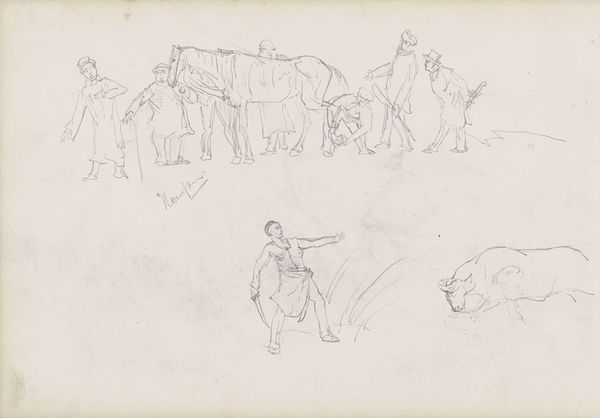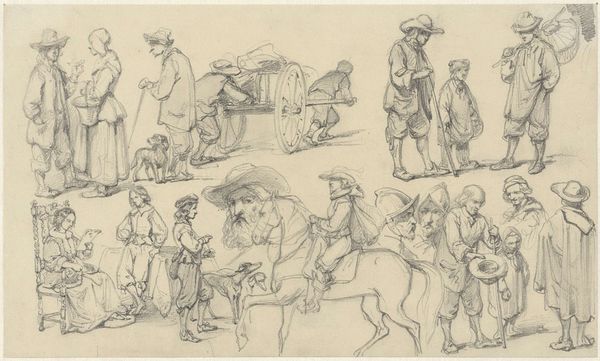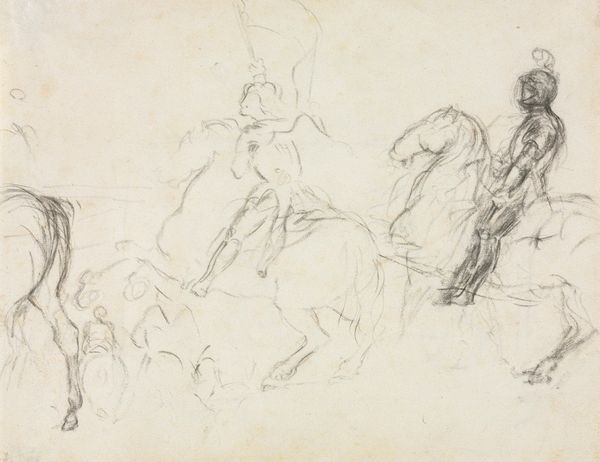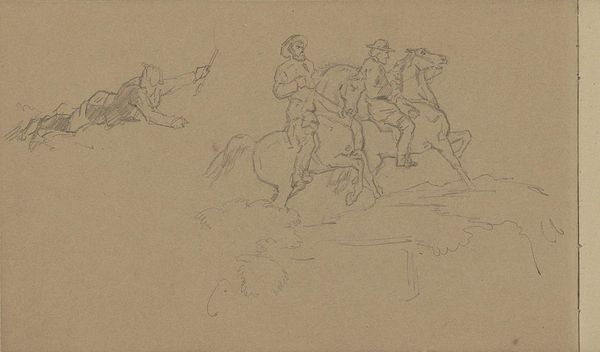
drawing, paper, pencil
#
drawing
#
light pencil work
#
pencil sketch
#
sketch book
#
landscape
#
paper
#
personal sketchbook
#
idea generation sketch
#
child
#
sketchwork
#
sketch
#
pen-ink sketch
#
pencil
#
sketchbook drawing
#
genre-painting
#
sketchbook art
#
fantasy sketch
#
realism
Copyright: Rijks Museum: Open Domain
Editor: This is "Studieblad met kinderen, dieren en een waterplaats," a pencil and paper drawing by Willem Roelofs, created around 1846 to 1851. It's like stepping into the artist's personal sketchbook! The hurried, almost frantic energy of the pencil lines gives me the impression that I’m viewing Roelofs’ raw ideas. What do you make of this seemingly random assortment of figures? Curator: Well, considering the historical context, these types of sketches provided artists with a resource bank. These weren't necessarily intended for public display, but acted more like visual notes. Genre paintings, especially those depicting rural life, gained popularity in the 19th century. Do you see how Roelofs might have used these sketches to construct larger, more finished pieces that catered to the public's interest in the everyday lives of the Dutch people? Editor: That makes a lot of sense! I didn't initially consider its function as a preparatory study. I was more drawn to the casual and almost intimate feeling it evokes. Is that why these were not frequently displayed publicly? Curator: Precisely. Displaying the unfinished creative process wasn’t deemed appropriate back then. Think about the rise of realism and naturalism in art. These movements aimed to portray the world truthfully, but even that truth was carefully constructed for a paying audience. What we see here pulls back the curtain on that curated image. Do you think seeing these types of sketches changes our perception of finished works of art from this period? Editor: Definitely! It humanizes the artist, revealing the labor and thought behind the polished final product. Knowing this makes me think about the political role of these polished artworks too, considering whose stories were deemed worthy of representation at the time. I suppose that by depicting the rural lives, Roelofs also helped solidify and perpetuate cultural narratives within the art world. Thank you for sharing a fresh perspective. Curator: And thank you for prompting me to reflect on how our contemporary appreciation for artistic process reshapes our understanding of 19th-century art!
Comments
No comments
Be the first to comment and join the conversation on the ultimate creative platform.
